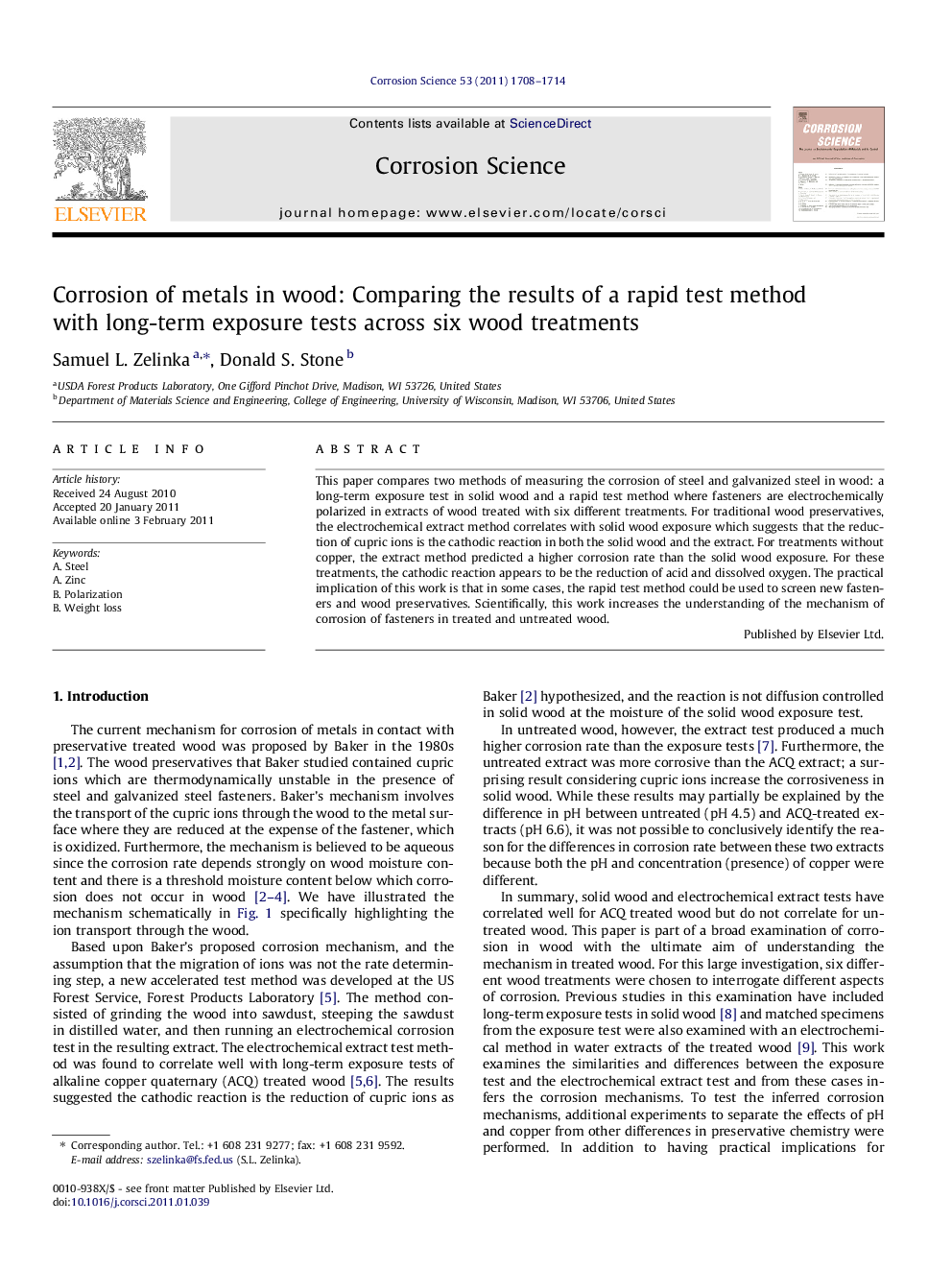| Article ID | Journal | Published Year | Pages | File Type |
|---|---|---|---|---|
| 1470337 | Corrosion Science | 2011 | 7 Pages |
This paper compares two methods of measuring the corrosion of steel and galvanized steel in wood: a long-term exposure test in solid wood and a rapid test method where fasteners are electrochemically polarized in extracts of wood treated with six different treatments. For traditional wood preservatives, the electrochemical extract method correlates with solid wood exposure which suggests that the reduction of cupric ions is the cathodic reaction in both the solid wood and the extract. For treatments without copper, the extract method predicted a higher corrosion rate than the solid wood exposure. For these treatments, the cathodic reaction appears to be the reduction of acid and dissolved oxygen. The practical implication of this work is that in some cases, the rapid test method could be used to screen new fasteners and wood preservatives. Scientifically, this work increases the understanding of the mechanism of corrosion of fasteners in treated and untreated wood.
Graphical abstractSchematic illustration of the mechanism of corrosion in treated wood involving cupric ion transport through the wood.Figure optionsDownload full-size imageDownload as PowerPoint slideResearch highlights► A rapid test method correlates with long-term exposure tests for traditional wood preservatives. ► In all cases cupric ions in the wood extract increased the corrosion rate. ► Correlation between the methods depends on the pH and presence of copper in the extract.
